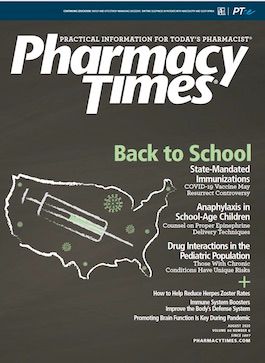Publication
Article
Pharmacy Times
Does a Broken Leg Support a Worker’s Compensation Claim?
Pharmacist suffered injury while checking for a possible pharmacy break-in during security check.
ISSUE OF THE CASE
A pharmacist responds to a call from the security monitoring service that there may have been a break-in at the pharmacy. He goes there, only to fall during the security check. Can he maintain a worker’s compensation claim for an on-the-job injury?
FACTS OF THE CASE
A pharmacist had been employed by a national chain pharmacy for about 3 years at a location in a South Central state. He received a telephone call from a company official indicating that something had led the security system monitoring service to conclude that there may have been a break-in at the pharmacy. That call came on Christmas Day when the pharmacy was closed.
Several facts are noteworthy at the outset: the pharmacist was 66 years of age, and the pharmacy was in a free-standing building in the parking lot of the main store location. The pharmacist was at home when he received the message, so he drove the 45 miles or so to the other town where the pharmacy was located.
Upon arriving, he parked in a spot directly in front of the pharmacy and observed the situation, concluding that there was no sign of a possible forced entry. Moreover, he could not hear any alarm. He left his car and fell while climbing the curb, resulting in a broken left leg. He was taken in an ambulance to a hospital, where he was an inpatient for 21 days. Surgeons had to place a rod in his leg with 4 screws to hold it in place. His hospital stay was followed by an 11-day inpatient rehabilitation program.
He filed for worker’s compensation benefits, but his employer denied the claim because the firm did not consider him to be performing “employment services” when he was injured. To follow up on that denial, the pharmacist filed a claim with the state’s Worker’s Compensation Commission. A hearing with that agency led to the conclusion that he had sustained a compensable injury.
The employer filed an appeal with the state court of appeals, arguing that no substantial evidence was found to support the decision of the commission.
THE RULING
The court focused on several issues in the case, concluding that there was indeed sufficient evidence to establish that the pharmacist was acting within the scope of his position and performing employment services at the time of the injury. The court ruled that he was entitled to worker’s compensation.
THE COURT’S REASONING
The court began by reviewing the flow of information. Employees in the security monitoring center detected that something was possibly amiss and turned to their call list for that location. Staff members at the center decide whether someone needs to go check on things and, in this instance, they called the pharmacist (who was subsequently injured) and left a voicemail message. The pharmacist called back and asked that the police be contacted to go and see whether there was physical evidence of an attempted entry. Then, the pharmacist received a call from an employee of the pharmacy firm, whose title was asset protection manager, who asked the pharmacist to drive to the site to check out the situation. That official had testified that he was not the pharmacist’s supervisor and had no authority over him. However, when he made the request, the pharmacist complied, later suffering the injury.
At the end of the hearing at the administrative agency level, it was concluded that the injury arose out of the “course and scope of the pharmacist’s employment.”
Under ordinary circumstances, the pharmacist would not be considered to be “at work” until he arrived in the pharmacy. But this situation was different. There had been a prior instance when the pharmacist had driven to the pharmacy to check on a possible security issue. Moreover, the pharmacist had testified that he felt it was part of his job responsibilities to prevent and report robberies.
Precedent from earlier court decisions indicated that the court was to review all the evidence and inferences from it in a light most favorable to the administrative agency. The agency’s decision was to be affirmed if supported by substantial evidence; the court concluded that was the situation here.
The standard for overruling or reversing a decision by the agency was that the court be convinced that “fair-minded persons with the same facts before them could not have reached the conclusions of the agency.” Another earlier case had concluded that “an employee is performing employment services when he or she is doing something that is generally required by his or her employer.”
Continuing, the court pointed out that “the critical inquiry is whether the interests of the employer were being directly or indirectly advanced by the employee at the time of the injury,” and affirmed the decision of the Worker’s Compensation Commission.
Joseph L. Fink III, BSPharm, JD, DSc (Hon), FAPhA, is a professor of pharmacy law and policy and the Kentucky Pharmacists Association Endowed Professor of Leadership at the University of Kentucky College of Pharmacy in Lexington.







